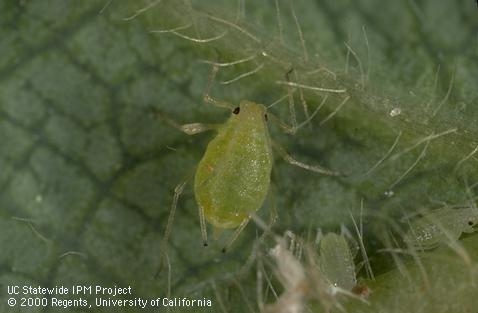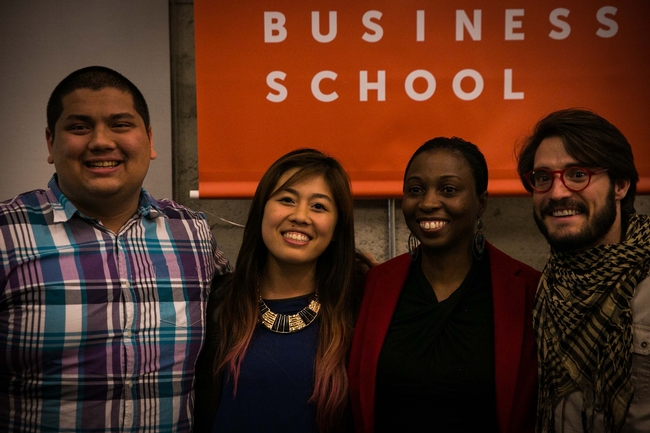
Posts Tagged: app
An App for Bee Health
So you want to know about bee health? Yes, there's an app for that--and you're welcome to download...
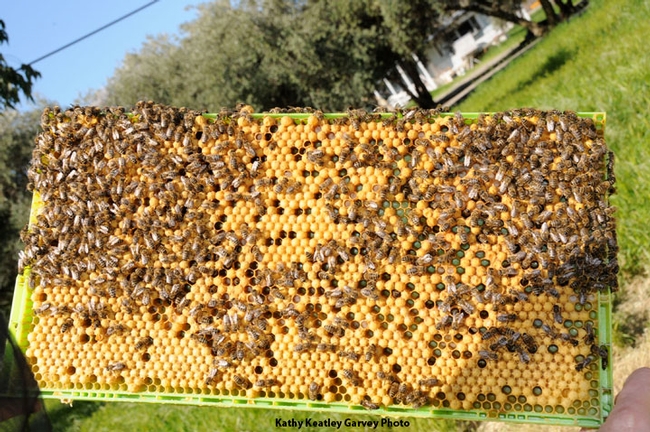
A frame from the Harry H. Laidlaw Jr. Honey Bee Research Facility, UC Davis. (Photo by Kathy Keatley Garvey)
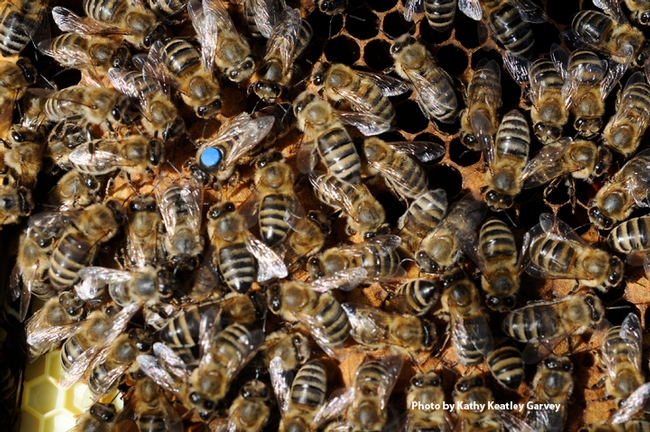
Want to know about bee health? There's an app for that. Alberta Agriculture has created Phase 1 and is working on Phase 2. (Photo by Kathy Keatley Garvey)
New app helps strawberry growers manage pests
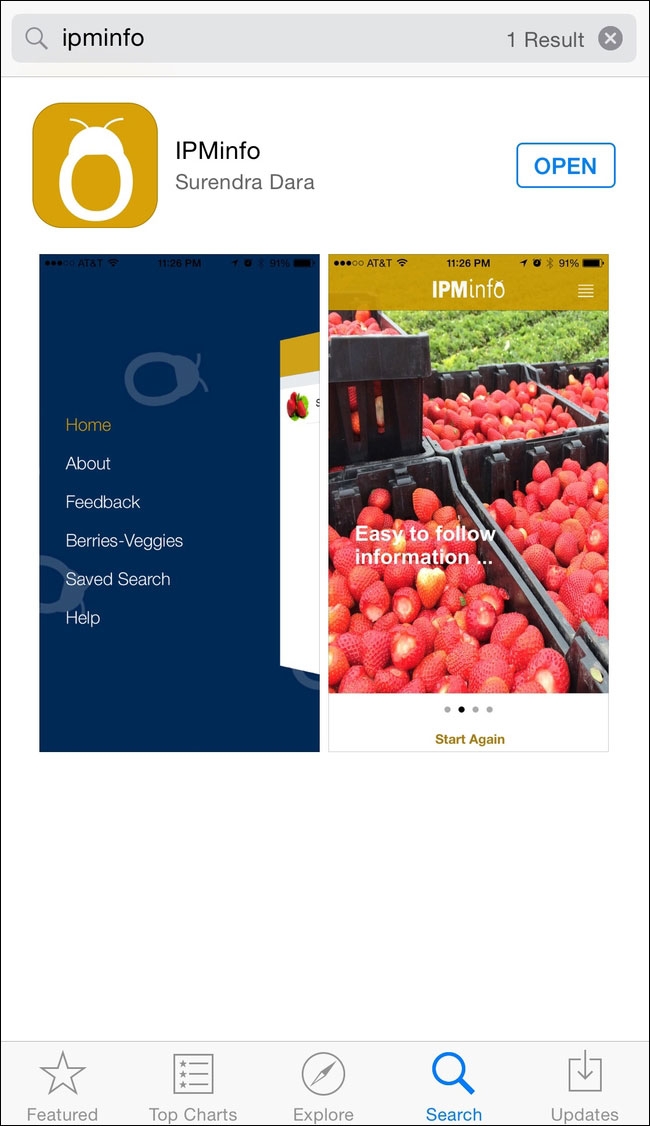
Extending research information is an important part of UC ANR Cooperative Extension. As communication technology is advancing every day, using modern channels of communication are important for successfully reaching out to growers, pest control advisers (PCAs), and other key players of the agriculture industry. Traditional newsletters (Central Coast Agriculture Highlights), blogs (Strawberries and Vegetables and Pest News), Facebook, Twitter (@calstrawberries and @calveggies), Tumblr, and online repositories of meeting handouts and presentations are some of the tools that play a critical role in making important information about the Central Coast strawberry and vegetable extension program readily available to the agricultural industry. The popularity of smartphones has made this information even easier to access.
Smartphone applications are becoming popular in agriculture to provide information and for decisionmaking. However, because there were no such applications to help California strawberry and vegetable growers, IPMinfo was developed. The first version of the app was released in December 2014 and an updated version was released in April 2015.
Growers can find information on invertebrate pests, including as aphids, cyclamen mite, greenhouse whitefly, lygus bug, spider mite, and western flower thrips. Diseases include angular leaf spot, anthracnose, botrytis fruit rot, charcoal rot, common leaf spot, fusarium wilt, leaf blotch and petiole blight, leather rot, mucor fruit rot, phytophthora crown rot, powdery mildew, red stele, rhizopus fruit rot, verticillium wilt, and viral decline. Each pest entry has information on biology, damage symptoms, and management options with associated photos. Links provided in the management section will take the user to the UC IPM website for more detailed information, especially about various control options.
To download the app on iPhones, go to the App Store and search for IPMinfo.
Author: Surendra Dara, UC ANR Cooperative Extension advisor, San Luis Obispo and Ventura counties
Hackathon movement connects consumers to food
On a Friday evening in a San Francisco conference room, food and technology leaders – including nutrition expert Carl Keen, a UC Davis professor affiliated with the UC Agriculture and Natural Resources Ag Experiment Station – spoke to a mixed audience on the need for innovation in adapting populations across the world to changing food systems.
In the crowd, one inspired undergraduate student from UC Davis thumbed together some notes on his phone. The next day he stood in front of everyone at the event – more than 250 in all – and pitched his newly formed idea for a nutrition app.
It drew a small team: a Silicon Valley entrepreneur, a UC Davis nutritionist and a UC Berkeley student. Over the next 40 hours they developed a software application that matches safe foods to patient medications. With the final presentations Sunday evening, the judges announced the winners.
Their project, called Took that? Eat this., won first place at the 2015 Food Hackathon. They now have sponsors and are developing their idea into a real consumer product. They are also flying out to the World Expo in Milan, Italy, in September – the first devoted to food and where an even larger food-themed hackathon will take place.
(Food Hackathon from FounderLY on Vimeo)
Breaking down the silos
“It's powerful how much happens in such a short period of time,” says Bob Adams, innovation adviser for the UC Davis World Food Center and a mentor for the hackathon teams. “It was a great experience for all the UC Davis students who participated, because they don't normally interact in projects with students from other programs.”
With nearly 9,000 total hours spent in developing the 18 different projects, the hackathon was declared by the organizers a success and a testament to the power of crowd sourcing.
A group of passionate techies, foodies, scholars, investors and entrepreneurs shut in a room for two days pushed them like never before to apply their diverse expertise toward tackling some of the biggest problems facing food and ag.
A university connecting ag and nutrition
Research and industry leaders are looking to this model as one way to seed California's innovation ecosystem across the state's agricultural horizons. As another example, Mars, Inc., which co-sponsored the hackathon, is investing in a new type of university-industry partnership with UC Davis and the World Food Center by establishing the Innovation Institute for Food and Health.
“All of us win from these new and needed collective investments in innovation in food, agriculture and health,” writes Mars chief scientist Harold Schmitz in a recent Sacramento Bee op-ed.
Howard-Yana Shapiro, also a Mars chief scientist and a UC Davis fellow, sees innovative food technology projects like those crafted at the hackathon as this decade's biggest investment arena.
“The next, larger human generation will face food challenges ranging from climate change and water stress to growing demands for upmarket foods,” he wrote in a LinkedIn article. “But from what I saw at the hackathon, the next generation is on it.”
See the original story by the UC Davis World Food Center.
Remembering the Wild Bees
Native bee enthusiast Celeste Ets-Hokin of the Bay Area is on a mission: she wants residents to...

"Wild Bee Gardens" is the first known conservation app for North American native bees.

A sunflower bee foraging on an echinacea flower. (Photo by Celeste Ets-Hokin)
Mobile app helps growers protect water quality

Although there are many sources of water pollution, runoff from farms may contain contaminant levels that exceed water quality standards. Runoff from agricultural operations can pick up and carry natural and man-made pollutants, including fertilizers, salts, pesticides and sediments to lakes, rivers, wetlands and beaches, according to Loretta M. Bates, UC Cooperative Extension staff research associate, who leads the Agricultural Water Quality Research and Education Program in San Diego County.
Avocados and citrus are major tree crops in San Diego County, but “the app should be useful for growers of any tree crops,” says Bates.
The self-assessment questions fall into the following categories:
A. Property Management
B. Road Management & Erosion Control
C. Irrigation Practices
D. Leaching & Runoff
E. Nutrient Assessment & Fertilizer Management
F. Integrated Pest Management

“In the near future, we will have apps available for nursery and greenhouse growers and the apps will be available for use with devices other than iPads,” Bates says.
The tree crops app was developed by Ryan Krason, digital media specialist for UC Cooperative Extension in San Diego County, and Valerie Mellano, former UC Cooperative Extension advisor in San Diego County, with a third-party app developer. Krason and Bates are currently working on customizing the app for nursery and greenhouse operations.
The iPad app for tree crops is free and can be downloaded from the iTunes store. Search for "agricultural water quality."
For tree crop growers who don’t have iPads, the self-assessments can be printed off the Web at http://ucanr.org/sites/agwaterquality/files/121819.pdf and completed by hand. The Agricultural Water Quality Research and Education Program also offers printable self-assessments for greenhouse and nursery businesses and animal agriculture operations on the Web. While the iPad app will generate a report of suggestions, the print versions offer statements that address a group of questions.
For more information about the UC Cooperative Extension Agricultural Water Quality Research and Education Program, its iPad water-quality self-assessment app or other online assessment tools, visit http://ucanr.edu/sites/agwaterquality/Grower_Resources.

